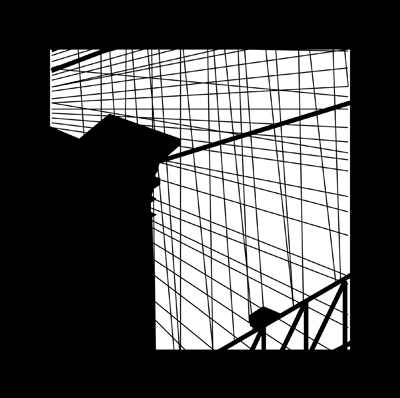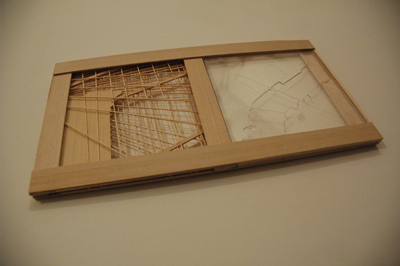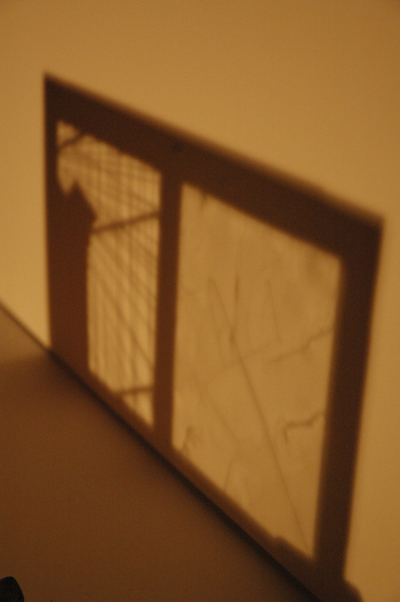
For the second project, the class viewed the documentary The Buena Vista Social Club by Wim Wenders. Information is provided in small sets that add up to the whole. For instance, you don't get a whole map of Havana or New York City, but you are given markers (which, in some cases, happen to be architectural) to help you figure out the “whole”.
The assignment was to incorporate the idea of the documentary into another site analysis (same site as before). We were asked to map the site in a diagrammatic way, framing the particular scenes to make up the whole without revealing all of the details. This idea came in the form of a postcard.
So, the idea of a postcard, to me, is pretty glum. Postcards tend to sit inside mail bags, mail boxes, and then drawers (or the trash). They're appreciated for so little time...what would keep them out in plain site? I decided to frame out two standard, but equally unrealistic views of the bridge. The left image was a distant perspective of the bridge, but I gave it without minor details. I left enough detail to show that this was the Brooklyn Bridge. The right image is a plan - the birds-eye view so often used in architecture. I know we use the plan all the time, but how often do you actually see a site plan? You would have to be flying. Both images are unrealistic, and I tried to make them more so. The detail is a compressed perspective - layers of depth are built one on top of the other to give you that distant, flattened set of thresholds (with just enough depth to accentuate the real layers). The plan is clear - not in thought, but in material. I cut the plan of the city elements and layered the route of the sequence of documentation on top of it - all cut and/or etched into the plexiglass.
So, to make my postcard more appealing (outside of the details of craft), I presented it by holding it up to the light. Unlike the sequence=path project, I included the plan of the site here (I wanted the sequence to do the talking in the last project). The light cast the shadow of zero depth, the relative views you see from distant perspectives. So, like a postcard, both the front and the back hold functional meaning (to help with limited depth of threshold and to make shadows).
Compressed perspective drawing of the detail frame
Limited site plan drawing with the sequential path
Postcard construction
Postcard casting shadow
Shadow (no perspective)



3 Comments
your professor is stuck in a 1990s time warp. Cinematic architecture was killed by the video games and flash.
nice models.
treekiller, could you explain please? to what could this 1990's boon in cinematic architecture be attributed, and what did it replace? with what has it been replaced now? I plan to ask my professor, but bear in mind this work is specifically for an elective course, Film and Architecture (although, the structure of the course is designed to mirror requirements in a semester-long studio). Thanks for your input.
I see you were very creative in this project. I like the idea, you made good use of materials and your articulation of the postcard was a refreshing change from the common. The shadow it creates is truly fantastic. So basically in this project you documented your journey across the bridge and created a souvenir of it. Well done.
Block this user
Are you sure you want to block this user and hide all related comments throughout the site?
Archinect
This is your first comment on Archinect. Your comment will be visible once approved.